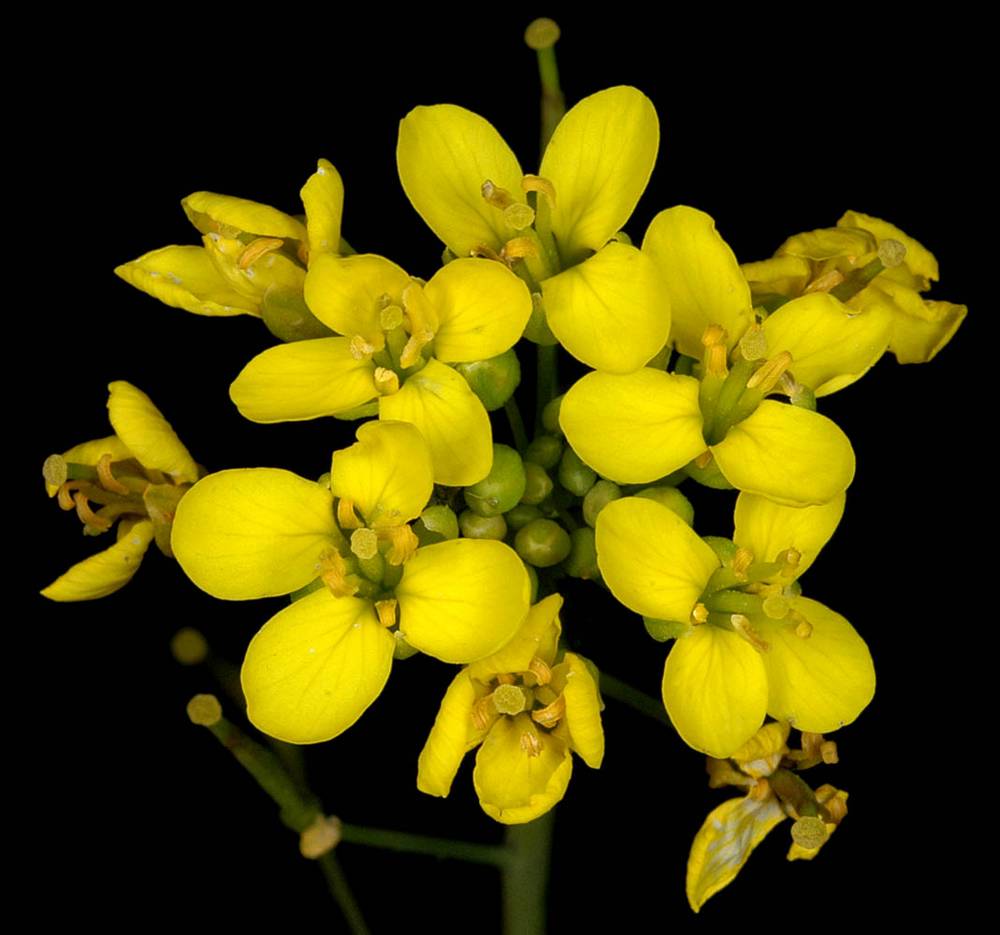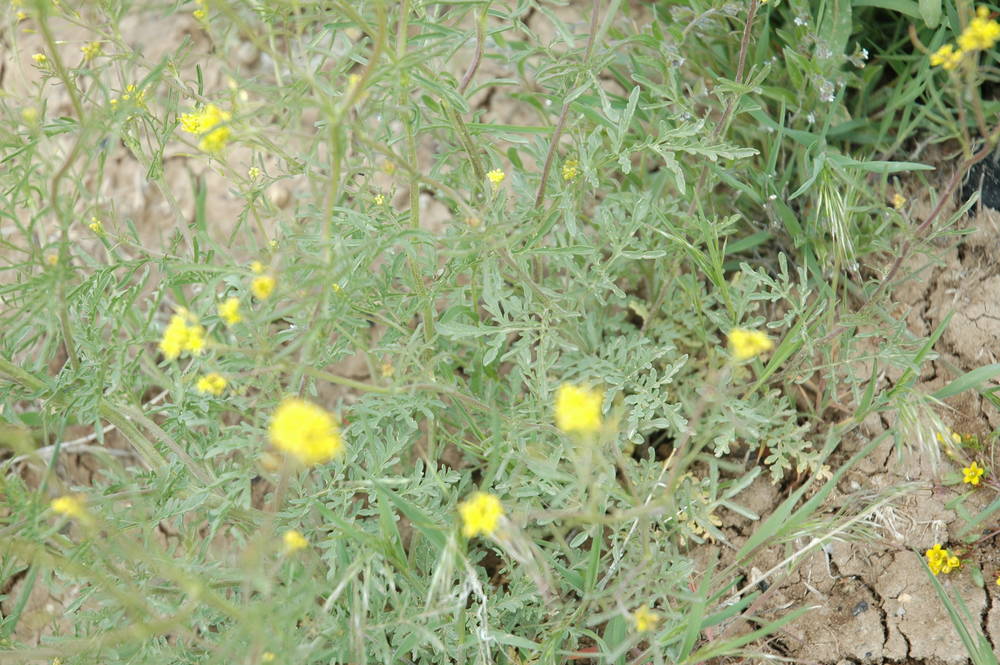Brassica rapa
Brassica
field mustard, turnip
cabbage, mustard, turnip
3–12(19) dm.
basal leaves usually rosulate; simple;
margins entire, dentate, or lyrate-pinnatifid;
cauline leaves bases auriculate to amplexicaul or neither, petiolate or sessile.
and lowermost cauline (5)10–40(60) × 3–10 (20) cm;
margins entire, dentate, or pinnatisect, with terminal lobes larger than 1–6 lateral lobes on each side, petiolate.
fruiting pedicels ascending to divaricate; (5)10–25(30) mm.
bracts 0.
sepals oblong; (3)4–6.5(8) mm, ascending;
petals obovate; (5)7–10(13) × (2.5)3–6(7) mm, bright yellow, rarely pale or whitish yellow;
claws 3–7 mm;
anthers oblong, 1.5–2 mm;
filaments 4–6(7) mm;
lateral curved at base;
styles obsolete.
sepals oblong or ovate; erect, ascending, or rarely spreading, caducous;
lateral pair usually saccate;
petals > sepals, yellow, rarely white;
blades obovate;
claws often differentiated from blades, nectar glands confluent or not; median glands present;
stamens 6, tetradynamous;
anthers oblong or ovate, obtuse;
ovules (4)10–50 per ovary;
septa complete;
styles distinct;
stigmas entire or 2-lobed.
divaricate to ascending; terete; (2)3–8(11) cm × 2–4(5) mm, valvular segments (1.3)2–5(7.5) cm, 8–15-seeded per locule;
valves with prominent midveins; terminal segments conical; (0.3)1–2.5(3.5) cm; seedless or rarely 1-seeded, sessile.
dehiscent siliques, linear; terete or latiseptate, rarely 4-angled, 2-segmented;
tips acuminate to subulate;
valves prominently 1-veined, glabrous, torulose; replums rounded; terminal segment filiform, conic, or rarely cylindrical; seedless.
1–1.8 mm in diameter.
4+ per fruit, uniseriate, globose;
seed coat reticulate, mucilaginous or not when wetted; wingless;
cotyledons conduplicate.
ovate to lanceolate, 2–8(12) × 0.8–3 cm, bases amplexicaul or auriculate, sessile.
absent or simple.
=20.
Brassica rapa
Brassica
Abandoned fields, roadsides, disturbed areas, gardens. Flowering Apr–Oct. 0–1500 m. BW, Casc, Col, CR, Est, Lava, Sisk, WV. CA, ID, NV, WA; worldwide. Exotic.
Brassica rapa includes many cultivars. These are recognized as varieties or subspecies, including turnip (ssp. rapa), Chinese mustard or bok choy (ssp. chinensis), and Chinese cabbage or petsai (ssp. pekinensis).
Worldwide. 38 species; 5 species treated in Flora.
Brassica species are the most significant oilseed plants and vegetables in the Brassicaceae. Human selection has produced numerous cultivars, generally recognized as varieties or subspecies. Many cultivars are grown in Oregon, but only a few have become naturalized. Extensive molecular studies on the tribe Brassiceae (Arias & Pires 2012; Hall et al. 2011; Warwick & Sauder 2005) have clearly demonstrated that the genera Brassica, Diplotaxis, and Erucastrum are polyphyletic, and the majority of their species should be transferred to other genera. Although Brassica elongata is well established in Nevada, it is known in Oregon only from a 1911 ballast collection in Linnton. It differs from the five Brassica species that are naturalized in the state by having fruit with a gynophore 1.5–5 mm long, whereas the others have sessile fruit.
Ihsan Al-Shehbaz
Ihsan Al-Shehbaz
- Local floras:
BC,
CA,
OR,
WA
- Local Web sites:
CalFlora,
CalPhotos,
Flora NW,
PNW Herbaria,
Turner Photog.
WildflowerSearch
iNaturalist (observations)
USDA Plants Database
- LBJ Wildflower Center
- SEINet
- Plants of the World Online
- Encyclopedia of Life
- Wikipedia
- Google Image Search




